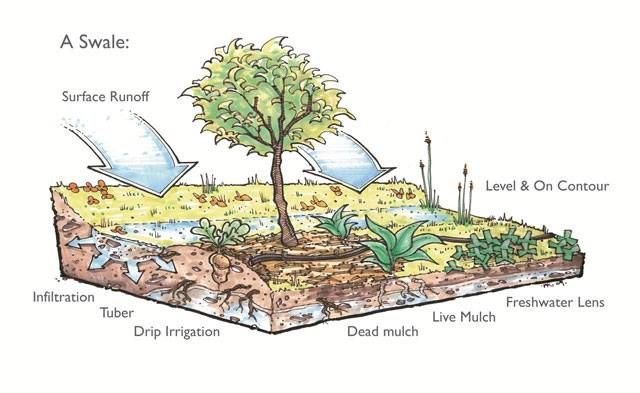
Swales are intentional langscape indentions into the land set to help water get further into the soil and flow on a gradient where the land slopes in, ideally it should be contoured to the specific slope of the land to maximize water flow into the ground. In plain, it is simply a trench with a "berm" or an opposing wall to help slow the flow downhill and start the process of ground water infiltration into the opposing side.
It is commonplace to continue growing on the berm, which would be a wonderful place to plant water-loving species. In our local community garden, what others and I have put in place on top of the berm are nitrogen-fixing species. If looking for a food source go with peas, beans or peanuts. If not any variety of clover, alfalfa of vetch! This will allow nitrogen fixation to occur over the water infiltration and further spread the nutrient love to their garden companions.
This is especially useful in areas which recieve little rain in order to store for a longer time a fair sum of still water for longer dispersion after precipitaion events. Although, even if not on a slope, a swale or allowance of a pool of water to form in a garden bed can radically reduce your expended utility water.
The swale can also double as a walkway if you simply lay down a decent layer mulch, depending on your soil type. The more clay which a soil contains, the longer a simple rain will produce standing water in a swale. Topsoil depletion can also be solved by consistant swales on sharp sloping land.
In our community garden we chose to combine swales and hugelkultur, which go well togeather and can help improve soil down the slope by leaching nutrients down the slope.
You can check out my hugelkultur post here:
https://steemit.com/homesteading/@dartistdreams/guide-to-hugelkulture-raised-beds
Thanks for reading/following!
Sources: